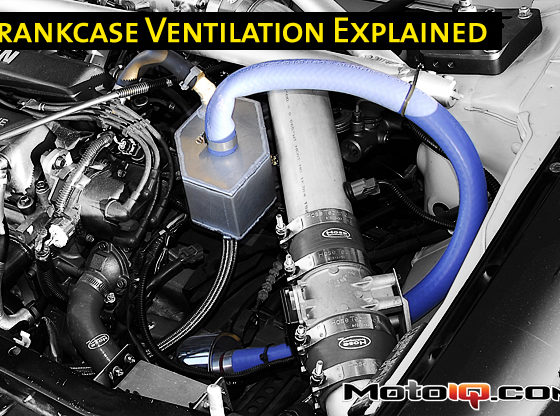
What the Hell Happened to Project Silvia?
by Dave Coleman
Project Silvia was a Krylon superstar. Back in the heady days of Sport Compact Car and paper magazines, it was our most popular project, and when we launched MotoIQ, dusting off the Silvia was one of our first stories. The rebirth of this project series was looking so promising, and then…
The problems all started in turn 3 at Streets of Willow, where the Disco Potato-boosted S13 junkyard engine didn't spool quite early enough to lug out of the corner in 3rd gear, but was too responsive to control if you dropped into 2nd. The same thing happened again in turns 4 and 5, and again on the skidpad. It made for a frustrating lap, and a lot of scolding from the drift-hating corner workers.
So I decided to fix the problem the only way I knew how. With junk I had laying around. I had a non-turbo S14 cylinder head just sitting there that hadn't cost me a dime. S14 heads share the low intake port position with the later U.S. SR20DE that most of us consider inferior, but the ports are actually larger than the front-drive heads, and total intake flow is actually about the same as the high port heads. Most importantly, for my purpose, the S14 head has variable intake cam timing. Advancing the intake cam boosts low-rpm torque. This better breathing creates more exhaust energy, which spools the turbo sooner too. Adding additional low-rpm cam advance on EVO IXs really wakes up their boost response, and I was hoping to achieve the same thing with the S14 head.

The S14 variable cam timing isn't nearly as sophisticated as the EVO's of course. EVO cam timing, like that on all modern engines, is continuously variable over a range of something like 30 degrees. Modern cam timing control is also closed loop, with a pulse width modulated oil control valve sending pressure the to advance mechanism, and a cam angle sensor feeding back the resulting cam timing in real time. The ancient system on the SR20, on the other hand, is just an on/off switch. Open the oil control valve, and the cam advances 20 crank degrees. Turn it off, and it retards the same amount. That's all she wrote. Still, the improvement in boost response is potentially huge.
Being a nerd, I really wanted to document exactly how the S14 head performed compared to the S13 head, with all else being equal, so I decided to do the head swap with no changes to the bottom end (and without even removing it from the car), and to resist the temptation to do any port work or other modifications to the head while I had it on the bench. I did want to continue the relentless flogging my Silvia gets, though, and that meant one modification would have to be done.
SR20DET heads are nearly identical to their non-turbo counterparts except for one thing. The turbo heads have sodium filled exhaust valves. Sodium filled valves have a hollow head and stem filled about 60% with Sodium. Sodium has an extremely low melting point (about 100 degrees C) and boiling point (880 C). In a hard-running engine, the valves are hot enough that the sodium in the head of the valve vaporizes and travels up to the cooler stem where it condenses back to a liquid again. The phase transition from liquid to gas absorbs a lot of heat, and the condensation dumps the heat in stem where the lage metal-to-metal contact between the valve stem and guide transfers that heat to the cooling system. Without this heat pipe effect, vastly more heat would have to be transferred through the valve seat. Too much heat through the valve seat, and you get a burned valve.
Sodium filled valves, then, are a really good idea on engines like mine that run 900C exhaust temps for half an hour at a time.

The sodium-filled DET valves have a fatter, hollow stem, but they narrow down at the end so they can use the same retainers.
So, all I needed to do was swap the sodium filled exhaust valves from my old engine into my new engine. Of course, the sodium filled valves have 7mm valve stems, while the solid valves have 6mm stems. That means I'd have to swap in SR20DET valve guides as well. No problem, I bought some of those, along with a full DET gasket set from Nissan Motorsports.



1 comment
I forgot how much I missed Project Silvia. I was an avid reader of Sport Compact Car when it was still in print form. I was happy to find out Project Silvia is still in work, as of this posting anyways. Now that I’m here I’ll have to catch up with all the turbo japanese goodness. Thanks for bringing this back guys!!!